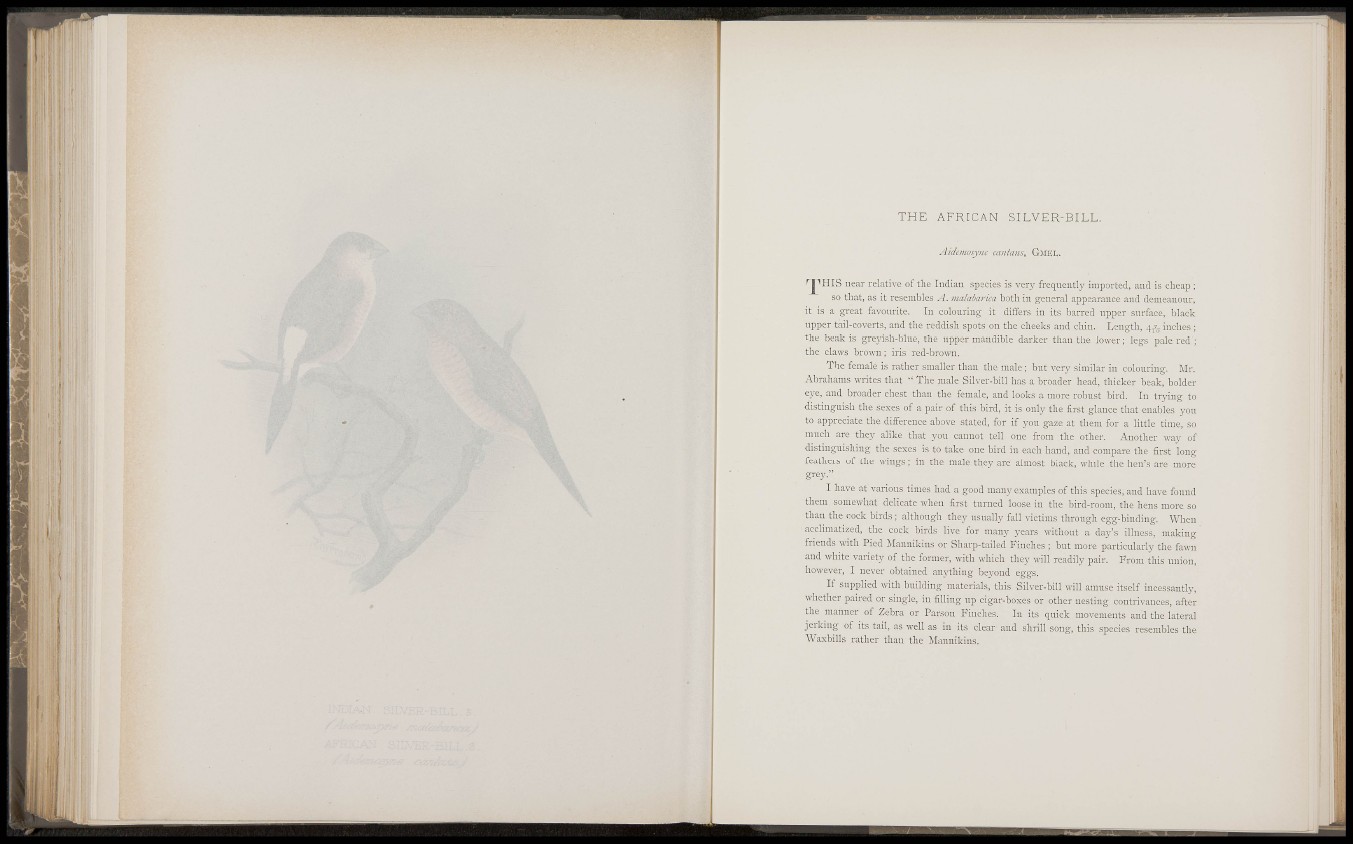
T H E AFRICAN SILVER-BILL.
4ideviosync can tans, GMEL.
' ^ ' ' H I S near relative of the Indian species is very frequently imported, and is cheap ;
so that, as it resembles A. vialabarica both in general appearance and demeanour,
it is a great favourite. In colouring it differs in its barred upper surface, black
upper tail-coverts, and the reddish spots on the cheeks and chin. Length, inches ;
the beak is greyish-blue, the upper mandible darker than the lower; legs pale red';
the claws brown; iris red-brown.
The female is rather smaller than the male ; but very similar in colouring. Mr.
Abrahams writes that " The male Silver-bill has a broader head, thicker beak, bolder
eye, and broader chest than the female, and looks a more robust bird. In trjdng to
distinguish the sexes of a pair of this bird, it is only the iirst glance that enables you
to appreciate the difference above stated, for if you gaze at them for a little time, so
much are they alike that you cannot tell one from the other. Another way of
distinguishing the sexes is to take one bird in each hand, and compare the first long
feathers of the wings; in the male they are almost black, while the hen's are more
grey."
I have at various times had a good many examples of this species, and have found
them somewhat delicate when first turned loose in the bird-room, the hens more so
than the cock birds ; although they usually fall victims through egg-binding. When
acclimatized, the cock birds live for many years without a day's illness, making
friends with Pied Maunikins or Sharp-tailed Finches ; but more particularly the fawn
and white variety of the former, with which they will readily pair. From this union,
however, I never obtained anything beyond eggs.
If supplied with building materials, this Silver-bill will amuse itself incessantly,
whether paired or single, in filling up cigar-boxes or other nesting contrivances, after
the manner of Zebra or Parson Finches. In its quick movements and the lateral
j e r k i n g of its tail, as well as in its clear and shrill song, this species resembles the
Waxbills rather than the Mannikins. i